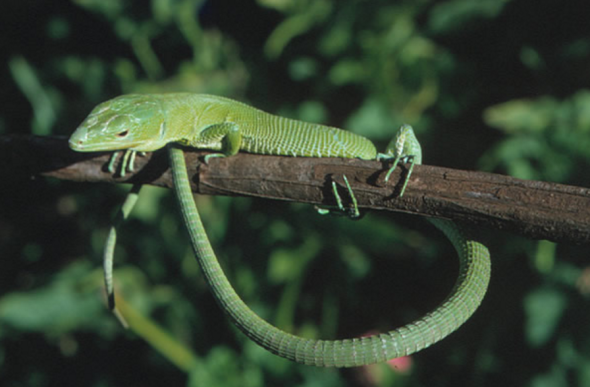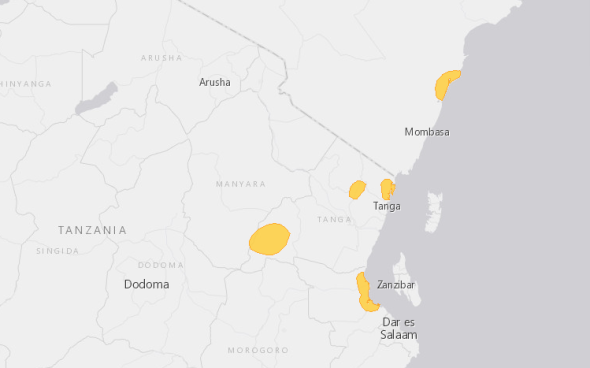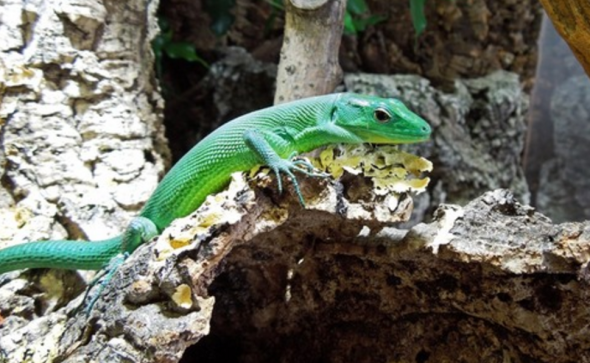Endangered Species Friday: Gastropholis prasina.
Endangered Species Friday: Gastropholis prasina
In this Fridays Endangered Species Watch Post (ESP), I focus briefly on this rather elusive species of Green Keel bellied Lizard, that’s endemic to the continent of Africa. I’ve long adored our African reptilians, unfortunately they’re own habitat like many larger species of fauna is under threat… (Image credited: S. Spawls) Green Keel bellied Lizard.
Listed as (near threatened) the species was primarily identified by Dr Franz Werner (15 August 1867 in Vienna - 28 February 1939 in Vienna) was an Austrian zoologist and explorer. Specializing as a herpetologist and entomologist, Werner described numerous species and other taxa of frogs, snakes, insects, and other organisms.
I thank Dr Werner (despite not being alive today), for his truly amazing journeys all over the African continent of which he located many hundreds of different reptiles, snakes, frogs, worms, and an assortment of other mammals. Had Dr Werner not followed on from his fathers footsteps its quite likely the Green Keel bellied Lizard wouldn’t be known today (among many other animals this amazing man identified).
Gastropholis prasina was originally identified back in 1904, then re-classified by Dr Loverbridge back in 1936 as (Bedriagaia moreaui ). However today this is not the species true name, G. prasina remains the true identity. Endemic to Kenya and Tanzania, the species is commonly known found along the eastern arc of Kenya and Tanzania’s coastal plain.
Localities are: Watamu, Arabuko-Sokoke Forest, Amani in the Usambara Mountains, Tanga, Zaraninge Forest, and the Nguru Mountains. The reptilian probably also occurs in Kenya’s Shimba Hills, however this has yet to be fully confirmed.
Populations are known to be “severely fragmented”, which has led to concerns that the species may soon be re-listed as (vulnerable or even endangered). Current historical data records show no evidence of a mean population count sparking more concerns that the species may be more “threatened than has been led to believe”. For now we can only assume (but not estimate) what the population count may be based on location and trapping (see image below). (updates to follow). Please view the map below of which details where the highest abundance of Green Keel bellied Lizard habitats remain today.
Image: Identified habitat locations of the Green Keel bellied Lizard.
Past records state the species is either “rare or considered very rare”, however I must point out that this historical data is from 1989 and a further assessment dated 2002. Vast swathes of habitat has been lost since the 1980’s and early millennium, habitat destruction is rife within Kenya and Tanzania, poaching, bush meat trade and land conversions are also increasing annually.. So in all honesty, none knows for sure if the species is now (to date rare or very rare), as records are out of date, which is an observational fact!
Unfortunately the species is neither listed on (Cites appendix I or II) despite the fact the reptilian is near (vulnerable). There remains no evidence that the Green Keel bellied Lizard is used within trade, or the Traditional African Medicine Trade (TAM). However there is evidence that the reptilian is collected during large scale tree felling for displays in local snake farms. Its quite possible the species “may be collected to feed snakes too” which if true could be seriously detrimental to the wild populations that are still unknown.
Image credit: Torsten Kunsch
Green Keel bellied Lizard is diurnal (either comes out during the day or not). The reptilian is also known to be quite secretive and arboreal (living mostly in or among trees), which could explain why the reptilian is at the best of times difficult to locate and study, especially if the animal wants to come out only at night. Environmental scientists are in a sense playing cat and mouse when it comes to studying that is.
Despite the species living primarily among trees, there is no evidence that the animal lives high up among the canopies either, (confusing I know). Specimens have been located mainly close to the ground or next to the base of trees, as seen within the images above (1-2). Further studies have shown that the reptilian can live as high as 12 meters from base level within the tree, but not exactly the canopy.
Investigations haven’t really shed much light as to whether the species is indeed affected by habitat disturbance. However where cashew nut farms are being grown within the animals habitat of which these farms have turfed up the animals natural homes, there does appear to be some evidence that proves the Green Keel bellied lizard cannot tolerate this type of habitat disturbance, so we’ll need to be looking into this more closely, followed up with surveys in relation to intensive logging and species collection.
While the Green Keel bellied Lizard is not listed on either of the appendixes, the reptilian is known to inhabited ‘protected parks’ being that of Arabuko-Sokoke Forest and the Amani and Zaraninge Forest.
Major Threats
Coastal forest is rapidly disappearing within this species’ range, and is thought likely to represent a threat to the lizard. While it has been recorded from cashew plantations, it is thought to require continuous tree cover. Expanding human populations along the fertile East African coast, and associated agricultural development, are the major threats to forest in this region (2014). Much of the species’ coastal distribution is, however, within well-protected areas, and its largest distribution centre is inland in the Nguru Mountains.
It’s uncertain what the future holds for this rather secretive lizard, furthermore its evident that threats while minimal are still present and increasing, we still don’t know what the actual true population count is neither. More studies need to be conducted to determine the exact population, and where required the necessary protection plans and (listing on either Appendix I or II) applied.
Video: Green Keel bellied Lizard in Captivity
Thank you for reading and please follow me on Twitter for more great news updates by clicking the link below… Have a Great Weekend.
https://twitter.com/josedepre11 < Follow me on Twitter here.
Did you know you can also follow us on Facebook here:
https://www.facebook.com/InternationalAnimalRescueFoundationAfrica/
Dr Jose C. Depre PhD. MEnvSc. BSc(Hons) Botany, PhD(NeuroSci) D.V.M.
Environmental, Botanical & Human Science
NB: Don’t forget that every Monday, Wednesday and Friday’s editions of environmental news, vegan and vegetarian recipes, endangered species Monday and Friday, and much more. You can subscribe for free via entering your email address into the “follow me” drop box on the right hand side of this page. Its free, and you’ll be emailed direct all new media around the world every week directly from the International Animal Rescue Foundation’s Environmental News and Media Team and myself.
Rate this:
January 22, 2016 | Categories: You must be the change you want to see in the world | Tags: (ESP) International Animal Rescue Foundation Africa, Africa, Amani, Arabuko-Sokoke Forest, Cashew Farming, Cites, Dr Franz Werner, Dr Jose Depre, Endangered Species Watch Post, Fridays Animal, Frogs, Gastropholis prasina, Green Keel bellied Lizard, Insects, IUCN, Kenya, Lizard, Near threatened, Nguru Mountains, Organisms, Reptiles, Reptilians, S.Spawls, Snakes, Tanga, Tanzania, Torsten Kunsch, Usambara Mountains, Watamu, Zaraninge Forest | Leave a comment






